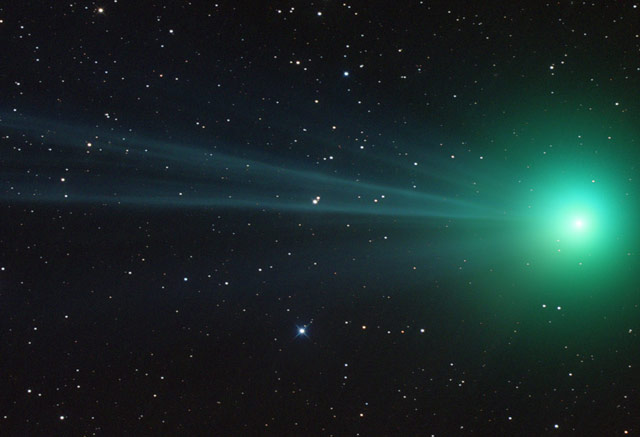Hi everybody
Here's the latest article from the Astronomy site at BellaOnline.com.
D Is for Double Star
We're used to having just one Sun, so the planet Tatooine in George Lucas's Star Wars seems exotic with its double sun. Yet at least half the stars we can see in the sky are doubles. But a "double star" can be a true binary or just an optical double, which is a chance alignment of unrelated stars.
http://www.bellaonline.com/articles/art301605.asp
*Neil Armstrong's birthday*
Armstrong was born on August 5, 1930. I don't think I need to say anything about who he was and what he did.
*The Perseids are coming*
The first Perseids have already been arriving, and there will be more until around the end of the month. The peak of the Perseid meteor shower is expected predawn on August 13, and a few nights before and after that should also be good. If you're not an early morning person, late the night before should produce a fair number of meteors too. To find out more about the Perseids: http://www.bellaonline.com/articles/art27461.asp
*Mission aniversaries*
August 6, 1961: Vostok 2 was the first manned mission to last a full day. Cosmonaut Gherman Titov slept in space.
August 6, 2012: NASA's Curiosity rover landed on Mars. Landing the heavy rover through the thin Martian atmosphere was quite a complicated set of maneuvers. The rover team had made a video called "Curiosity's 7 Minutes of Terror" to explain how it was supposed to work: http://www.youtube.com/watch?feature=player_embedded&v=pzqdoXwLBT8. And it *did* work.
August 8, 1989: ESA's Hipparcos mission was launched. It pinpointed more than 100 000 stars, 200 times more accurately than ever before.
*Dawn*
This is new color-coded map of Ceres showing the altitudes of the surface features, and with prominent craters labelled: http://www.jpl.nasa.gov/spaceimages/images/mediumsize/PIA19606_ip.jpg The craters are named for agricultural deities of various cultures – all approved by the International Astronomical Union. Here's a list telling you who's who: http://planetarynames.wr.usgs.gov/SearchResults%3Ftarget=CERES.
*Rosetta*
Sadly, we haven't heard from Philae lately, but Rosetta is very busy. The craft has been moved to what they hope will be a safe distance from the comet. It's almost at perihelion (the closest point to the Sun) and the increased activity could damage Rosetta if it's too close.
ESA has released a wonderful set of images of the Imhotep region of the comet. I'd never thought of the nucleus of a comet as any more than a snowy dirt ball, but there is a surprising amount of geological diversity. Here is a mosaic made up from six images of Imhotep: https://www.pinterest.com/pin/250090585534972433/. (They were taken from different distances, so the scale of the features varies.) There's also a map: https://www.pinterest.com/pin/250090585534972454/.
*New Horizons*
If you were on Pluto, the Sun would be a long way off. An artist's impression of Pluto's sky suggests it might look something like this: http://www.sott.net/image/s3/64389/full/090304_pluto_atmosphere_02.jpg (The haziness is Pluto's nitrogen atmosphere.) At that distance the Sun would appear about the size Jupiter does in Earthly skies at opposition. But despite looking small, the Sun is a star and it would still be very bright. Around a thousand times dimmer than from Earth, but still around 300 times brighter than a full Moon. You'd need eye protection - as for a solar eclipse - to look at it.
Please visit http://astronomy.bellaonline.com/Site.asp for even more great content about Astronomy.
I hope to hear from you sometime soon, either in the forum http://forums.bellaonline.com/ubbthreads.php/forums/323/1/Astronomy or in response to this email message. I welcome your feedback!
Do pass this message along to family and friends who might also be interested. Remember it's free and without obligation.
I wish you clear skies.
Mona Evans, Astronomy Editor
http://astronomy.bellaonline.com
One of hundreds of sites at BellaOnline.com
.
astronomy Newsletter








